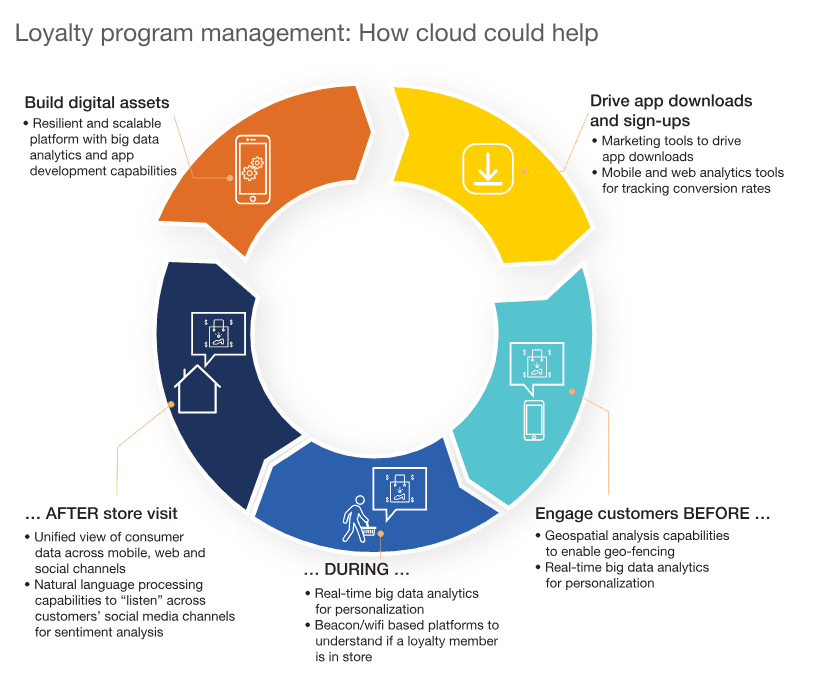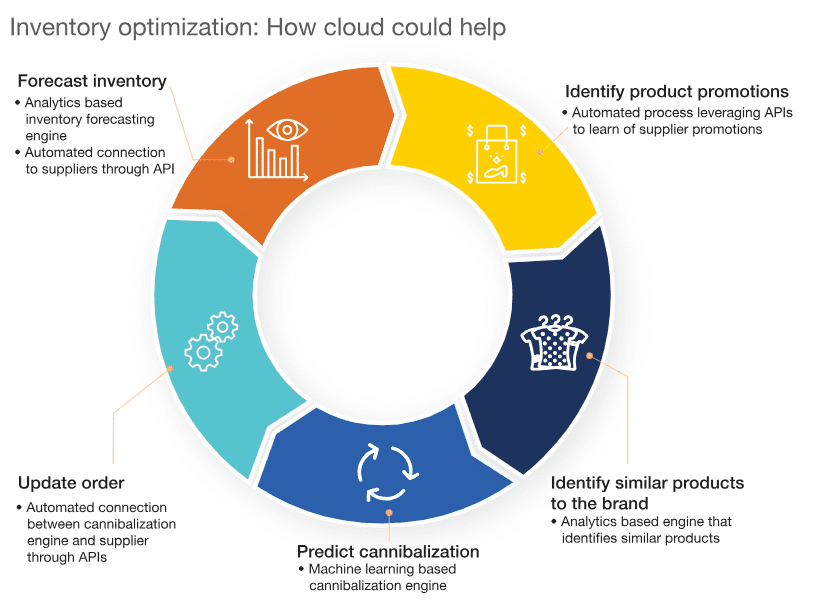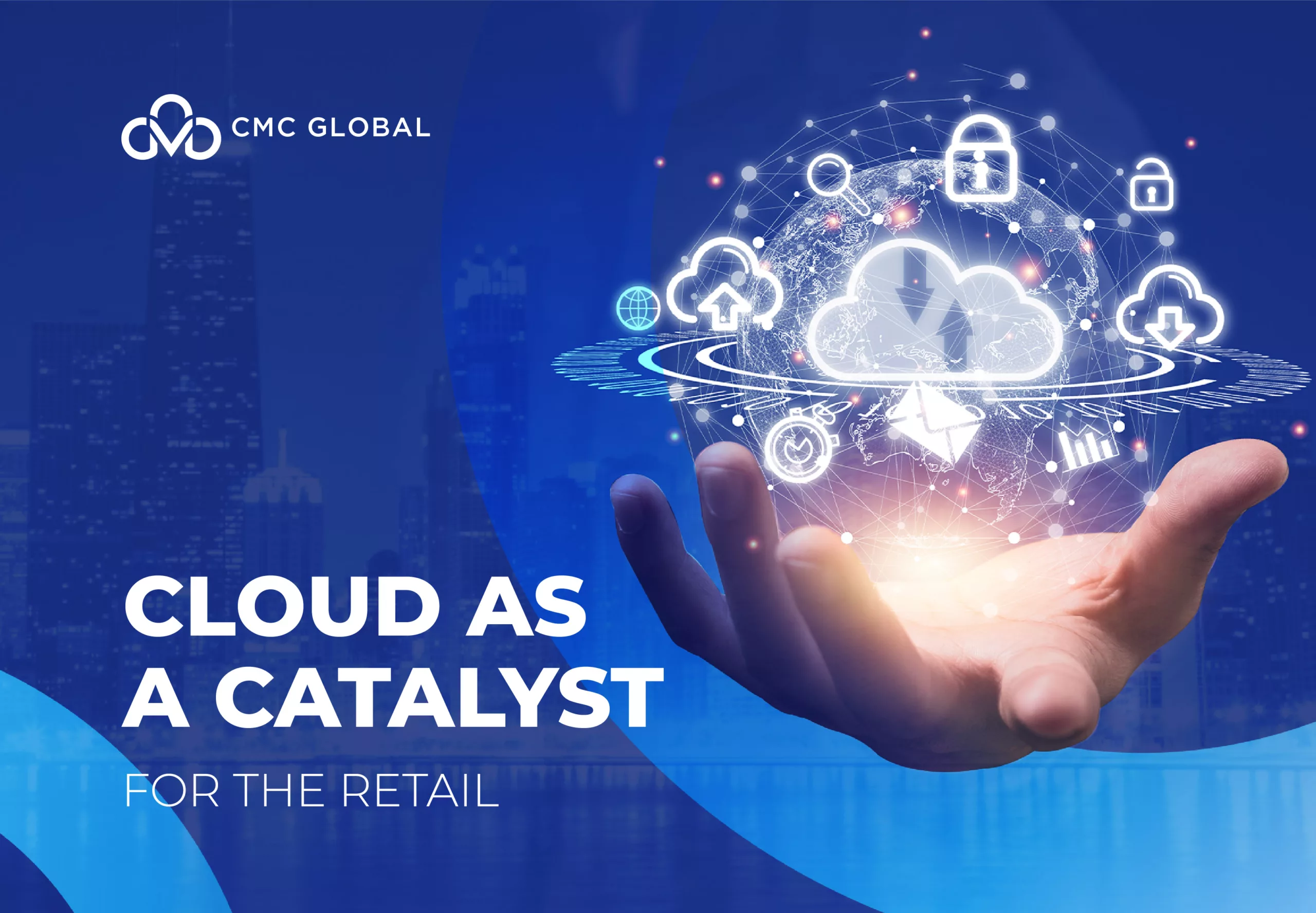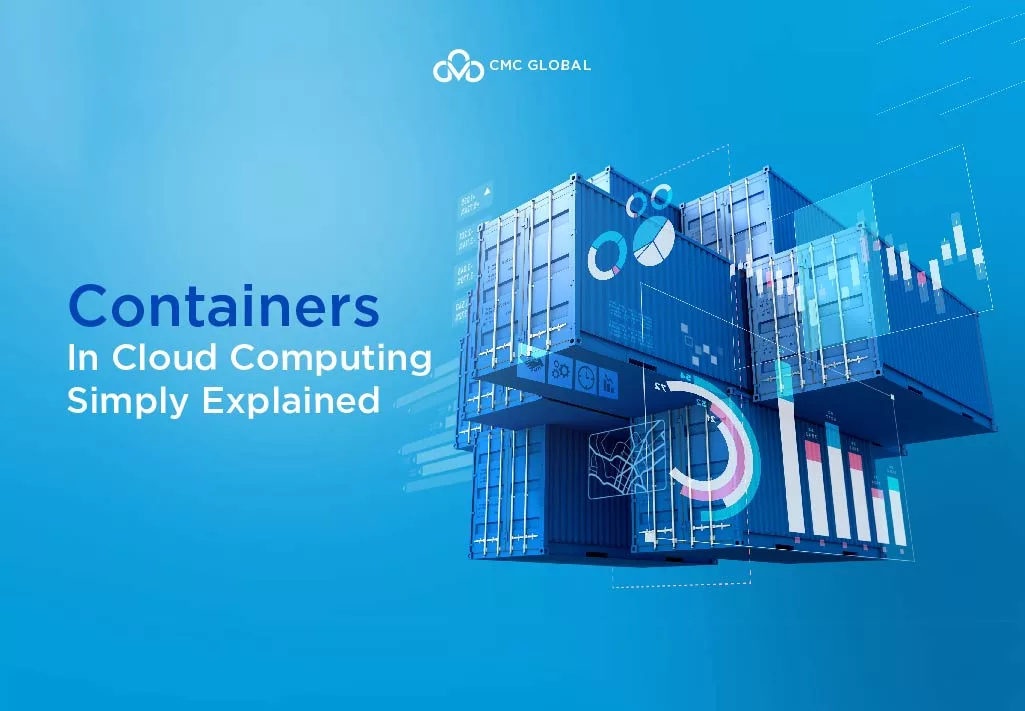For the retail industry, cloud computing offers benefits beyond just lowering computing and data storage expenses. To gain most of the cloud, retailers should optimise tasks that can benefit from it. In this article, we’ll walk through 5 ways to use cloud computing as a driving force for speeding up your business outcomes.
5 Opportunities to Improve Business Performance with Cloud
#1 Pricing and margin management
Insights
Pricing is a crucial factor for consumers and a major duty of retailers with big data handling. It affects the gross margin and the rate of items sold and can influence transaction duration. Retailers must keep track of rivals’ prices, deeply analyze sales history, foresee chances for adjusting prices, and then translate these evaluations into pricing for physical stores and online platforms.
Regrettably, for most retailers, this process remains largely manual. Information is frequently spread across channels without a reliable source, leading to a time-consuming insight-generating process. Retailers are starting to collaborate with CIO and analytics leaders of their companies, but they’re set back by the absence of real-time analytical solutions and data gaps.
Generally, the insights arrive overdue, and by the time they are transformed into pricing choices and communicated to stores, the opportunity has already passed.
How the Cloud can help

Cloud-based data platforms can take in diverse data from various origins and prepare them for examination. This can significantly reduce the time commitment for data experts, allowing them to dedicate their efforts to modelling.
Additionally, cloud technology presents possibilities for seamlessly integrating data from external origins and using machine learning and analytical tools to generate valuable insights. Therefore, it is paramount for decision-makers to thoroughly assess potential cloud service providers, identifying those capable of setting up a data platform while offering inherent analytics and top-tier machine learning capabilities.
#2 Loyalty program management
Insights
CMOs within companies are assigned the duty of acquiring new clients and ensuring existing customers’ loyalty, who frequently engage in more valuable transactions, contributing a greater lifetime value than new customers. While loyalty programs have traditionally served to retain customers, they present their own difficulties.
Identifying customers consistently across channels proves challenging, and CIOs face two main technological obstacles: data often remains isolated at each store level and isn’t always processed in real time. Loyalty programs based on mobile apps are beneficial in engaging consumers during purchasing; however, CMOs want to interact with consumers before and after their purchases.
How the Cloud can help

The cloud can unify various data sources, enabling a cohesive perspective of consumer interactions across transactions and channels like physical stores, mobile devices, websites, and social media. Additionally, it can facilitate real-time and batch data processing, effectively addressing technological challenges faced by CIOs.
Furthermore, CMOs can harness the capabilities of cloud technology to engage customers through customized digital promotions based on real-time analysis of data sets. For example, by merging mobile and web analytics tools with loyalty programs, they can create appropriate promotions and use natural language processing (NLP) to assess sentiments.
Retailers also have the potential to build robust and adaptable loyalty applications using cloud platforms, leveraging the marketing tools embedded within these platforms to boost app downloads.
#3 Inventory Optimization
Insights
Retailers encounter multiple obstacles when dealing with factors of inventory control. Lack of precise predictions, the seasonality of items, and unforeseen shifts in consumer preferences are only a few of the potential weak points that can endanger inventory management.
The shortage of standard attributes makes it extremely challenging to identify substitutes within a product range, leading to unexpected internal competition, particularly during promotional periods. Consequently, this results in excessive stock of one item and shortages of others, ultimately generating inefficiencies and additional expenses linked to inventory management.
How the Cloud can help

The transition to cloud-based technologies is critical for retail growth. According to IDC analysts, by 2025, 75% of global merchants will fully integrate orders and inventory data into the cloud, increasing customer satisfaction by 50% and lowering the cost to serve by 25%.
Collaboration among retailers, analytics experts, and CIOs is crucial to effectively use cloud infrastructure and analytics systems in constructing predictive and advisory inventory-forecasting systems, addressing the challenges of refining inventory management.
Advanced systems can incorporate elements such as seasonal patterns, promotional events, shifts in consumer preferences, and the relationship between product substitutes and complements into their projections. When combined with cloud-connected APIs for supplier promotions, these systems can enhance the precision of forecasts and the reliability of inventory-level projections.
#4 Real-time Inventory
Insights
Having a real-time view of inventory stands as a fundamental necessity for thriving omnichannel retail. Nevertheless, retailers are encountering difficulties in attaining such a high degree of transparency.
In the case where a customer makes an online purchase and chooses to retrieve the item in a physical store, the online platform might display availability at the store, yet the product could actually be absent on-site. This issue primarily arises from two factors: the Point of Sale and inventory systems might not have synchronized in real-time, or the product might exist within the store but not be in its anticipated location, often due to customers or staff misplaced it.
How the cloud can help

Cloud-based data systems can potentially establish a real-time reference point for inventory quantities across all channels and users, including customers and staff. This can be achieved by connecting into data pipelines and merging multiple data origins with minimal delay and impressive transaction handling capacity. In certain cases, such data platforms can even facilitate the publication of inventory information from local stores to e-commerce platforms and search engines, consequently generating supplementary revenue streams.
#5 Omni channel fulfillment
Insights
One primary benefit of brick-and-mortar retailers over their online counterparts is their network of physical stores. E-commerce leaders within these traditional retail companies aim to capitalize on these store networks to fulfill customer orders and decrease shipping expenses. However, removing an item from a store to satisfy an online order may negatively impact sales, especially if the item generates a higher profit margin than other sales channels.
Additionally, even when customers opt for in-store pickup, online platforms frequently struggle to provide accurate pickup times due to their limited insight into store operations and staffing levels. Retailers strive to develop analytical systems to help them make informed decisions, such as choosing between margin and volume, and provide customers with enhanced transparency. Nonetheless, their efforts are hindered by inadequate data and skilled personnel and the computational power and storage capacity necessary for performing these data-intensive calculations.
How the cloud can help

Machine learning-driven analytic solutions hosted on cloud platforms can assist e-commerce pioneers. These platforms mitigate the need to recruit top-tier data experts or invest in extensive on-site computational power and storage.
Additionally, they offer essential analytical functionalities for recognizing the nearest stores to the customer that possess the desired items, conducting real-time profit assessments that compare store pickup versus warehouse shipping, and delivering precise predictions of order readiness. These predictions are formulated based on factors such as the specific store, the items in the customer’s cart, and the time of day.
Consider going cloud native?
Optimizing retail performance in today’s dynamic market requires strategic partnerships that harness cutting-edge technology to drive efficiency and customer satisfaction. By collaborating with an AWS Advanced Tier Services Partner like CMC Global, retailers can streamline operations, optimize the supply chain, deliver personalized experiences, and stay agile in an ever-changing market, ultimately driving growth and success in the retail industry.
CMC Global’s expertise in cloud solutions and its track record in enabling businesses to harness the power of modern technology aligns well with the retail sector’s evolving demands. By choosing CMC Global as a partner, retailers can unlock the following benefits to improve their retail performance:
- Scalable infrastructure
- Cost Efficiency
- Supply Chain Optimization
- Data Analytics and Insights
- Personalized Customer Experiences
Contact us for further consultation.




